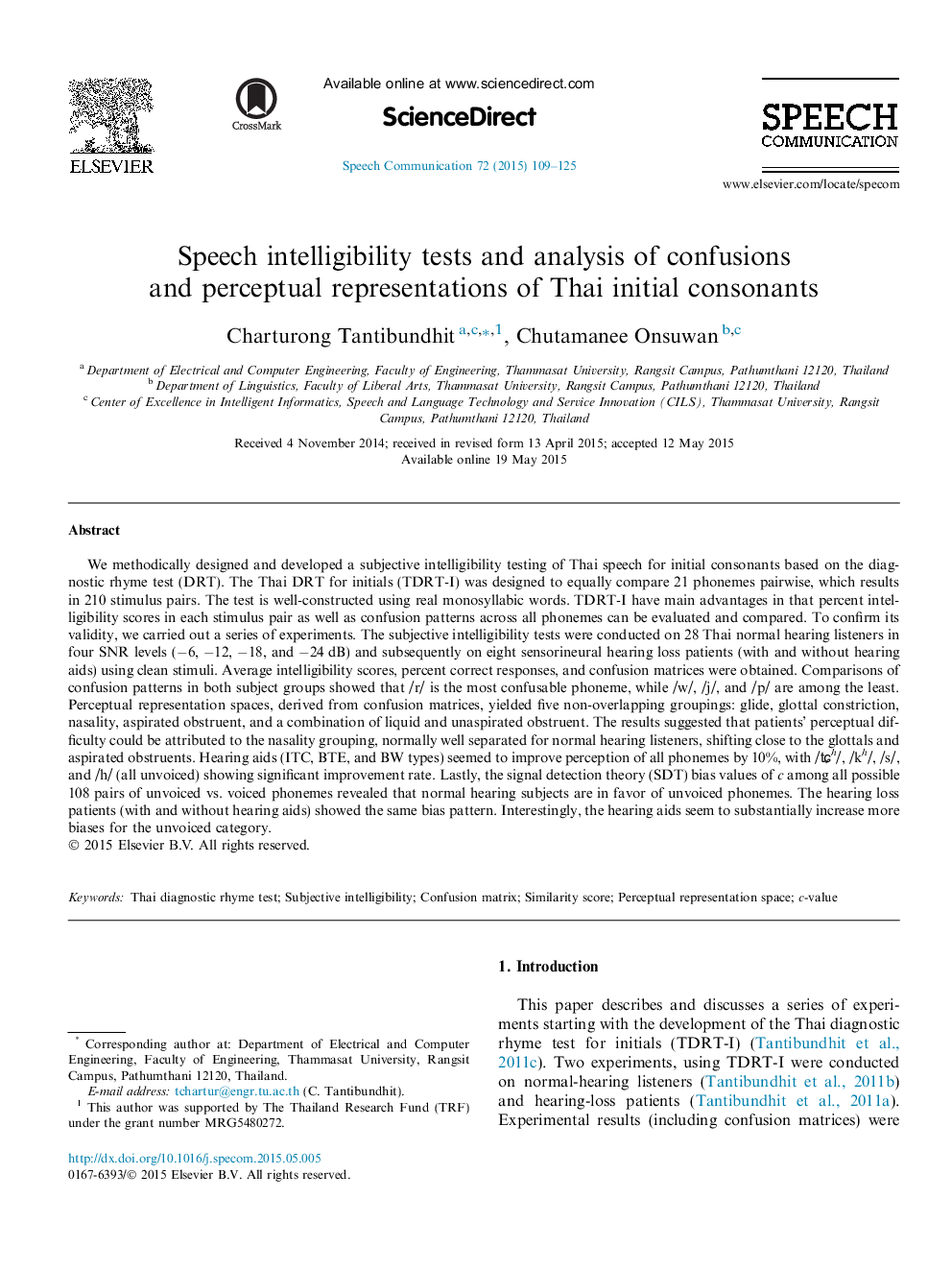| کد مقاله | کد نشریه | سال انتشار | مقاله انگلیسی | نسخه تمام متن |
|---|---|---|---|---|
| 6961050 | 1452028 | 2015 | 17 صفحه PDF | دانلود رایگان |
عنوان انگلیسی مقاله ISI
Speech intelligibility tests and analysis of confusions and perceptual representations of Thai initial consonants
ترجمه فارسی عنوان
تست های هوشمندی سخنرانی و تجزیه و تحلیل سردرگمی و ادراکات ادراکی از تومورهای اولیه تایلندی
دانلود مقاله + سفارش ترجمه
دانلود مقاله ISI انگلیسی
رایگان برای ایرانیان
موضوعات مرتبط
مهندسی و علوم پایه
مهندسی کامپیوتر
پردازش سیگنال
چکیده انگلیسی
We methodically designed and developed a subjective intelligibility testing of Thai speech for initial consonants based on the diagnostic rhyme test (DRT). The Thai DRT for initials (TDRT-I) was designed to equally compare 21 phonemes pairwise, which results in 210 stimulus pairs. The test is well-constructed using real monosyllabic words. TDRT-I have main advantages in that percent intelligibility scores in each stimulus pair as well as confusion patterns across all phonemes can be evaluated and compared. To confirm its validity, we carried out a series of experiments. The subjective intelligibility tests were conducted on 28 Thai normal hearing listeners in four SNR levels (â6, â12, â18, and â24 dB) and subsequently on eight sensorineural hearing loss patients (with and without hearing aids) using clean stimuli. Average intelligibility scores, percent correct responses, and confusion matrices were obtained. Comparisons of confusion patterns in both subject groups showed that /r/ is the most confusable phoneme, while /w/, /j/, and /p/ are among the least. Perceptual representation spaces, derived from confusion matrices, yielded five non-overlapping groupings: glide, glottal constriction, nasality, aspirated obstruent, and a combination of liquid and unaspirated obstruent. The results suggested that patients' perceptual difficulty could be attributed to the nasality grouping, normally well separated for normal hearing listeners, shifting close to the glottals and aspirated obstruents. Hearing aids (ITC, BTE, and BW types) seemed to improve perception of all phonemes by 10%, with /ʨh/, /kh/, /s/, and /h/ (all unvoiced) showing significant improvement rate. Lastly, the signal detection theory (SDT) bias values of c among all possible 108 pairs of unvoiced vs. voiced phonemes revealed that normal hearing subjects are in favor of unvoiced phonemes. The hearing loss patients (with and without hearing aids) showed the same bias pattern. Interestingly, the hearing aids seem to substantially increase more biases for the unvoiced category.
ناشر
Database: Elsevier - ScienceDirect (ساینس دایرکت)
Journal: Speech Communication - Volume 72, September 2015, Pages 109-125
Journal: Speech Communication - Volume 72, September 2015, Pages 109-125
نویسندگان
Charturong Tantibundhit, Chutamanee Onsuwan,
